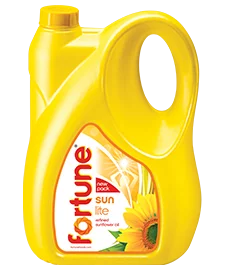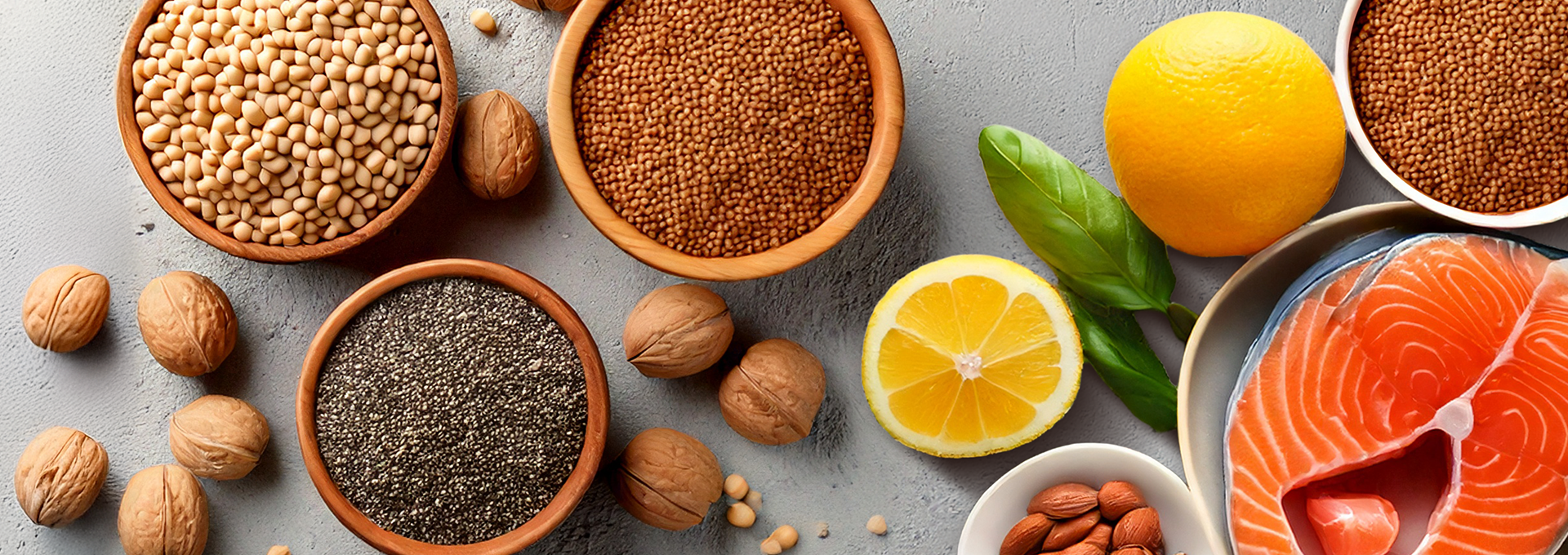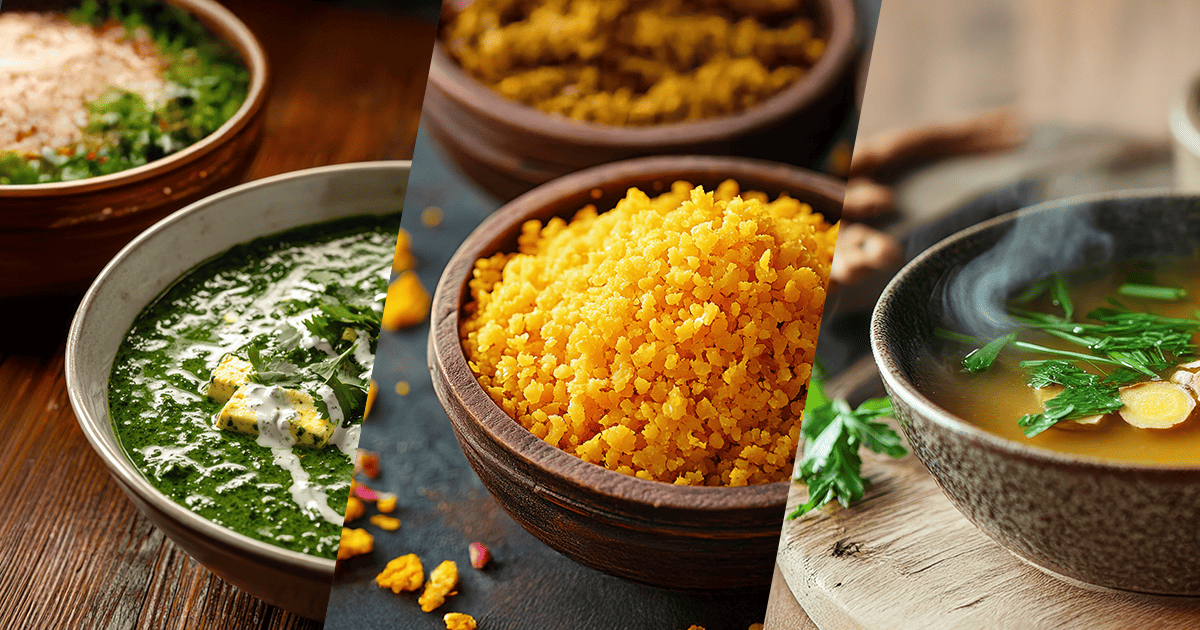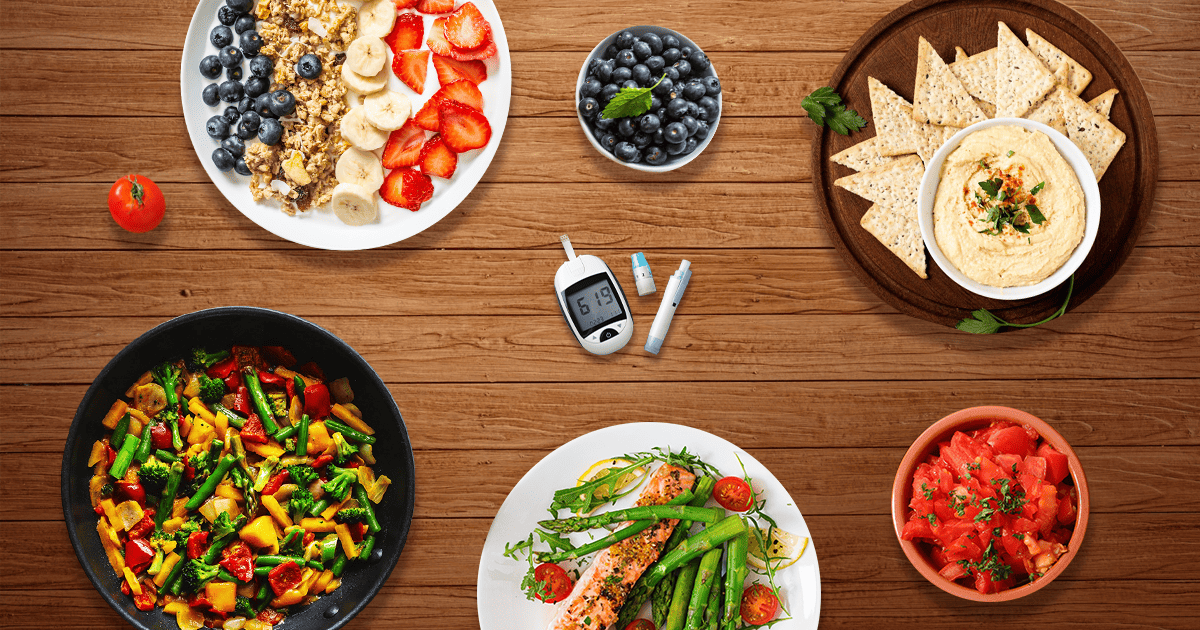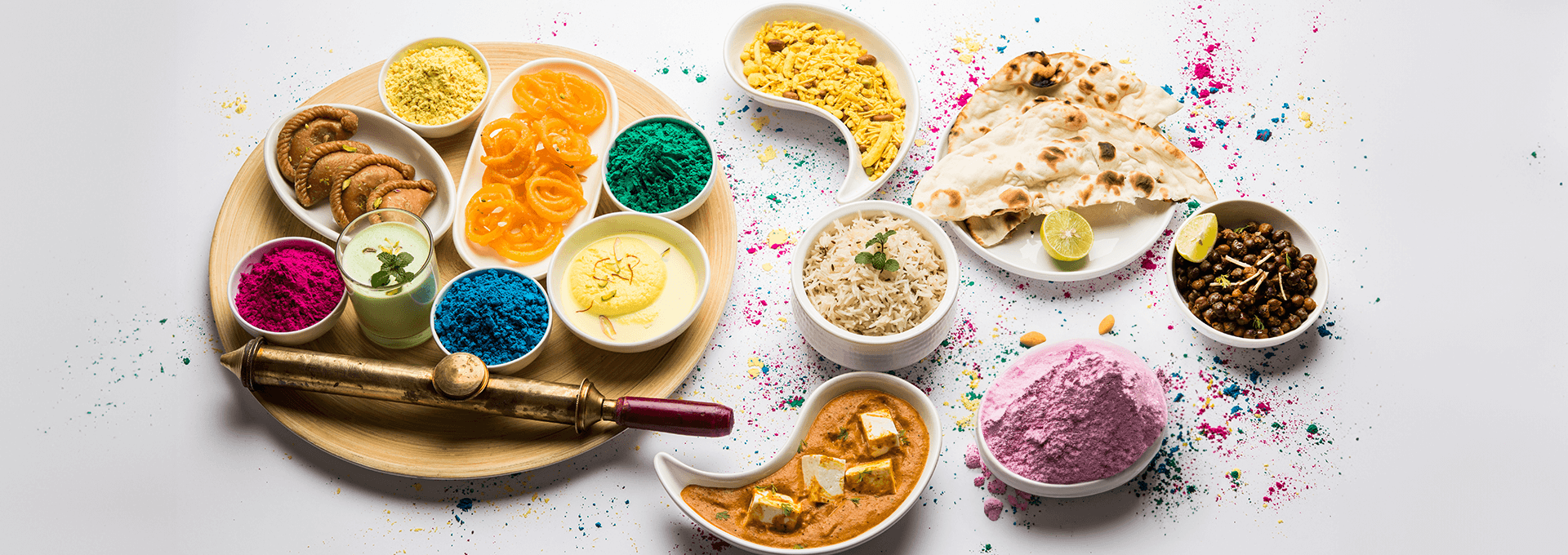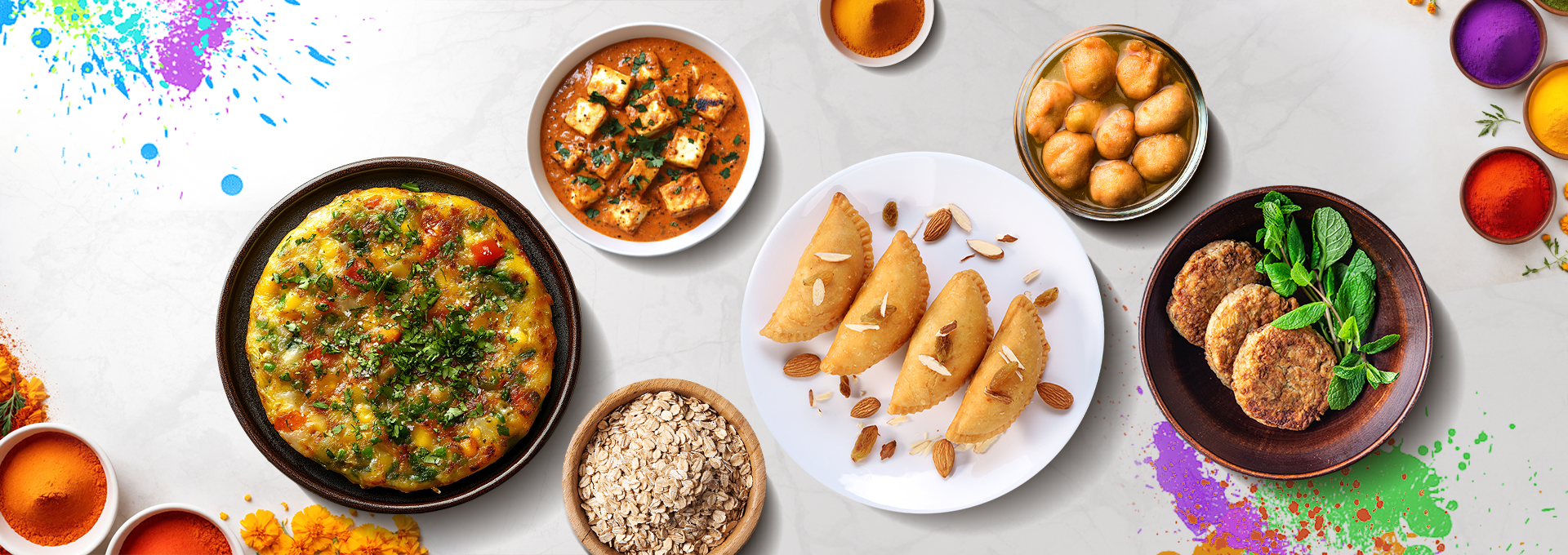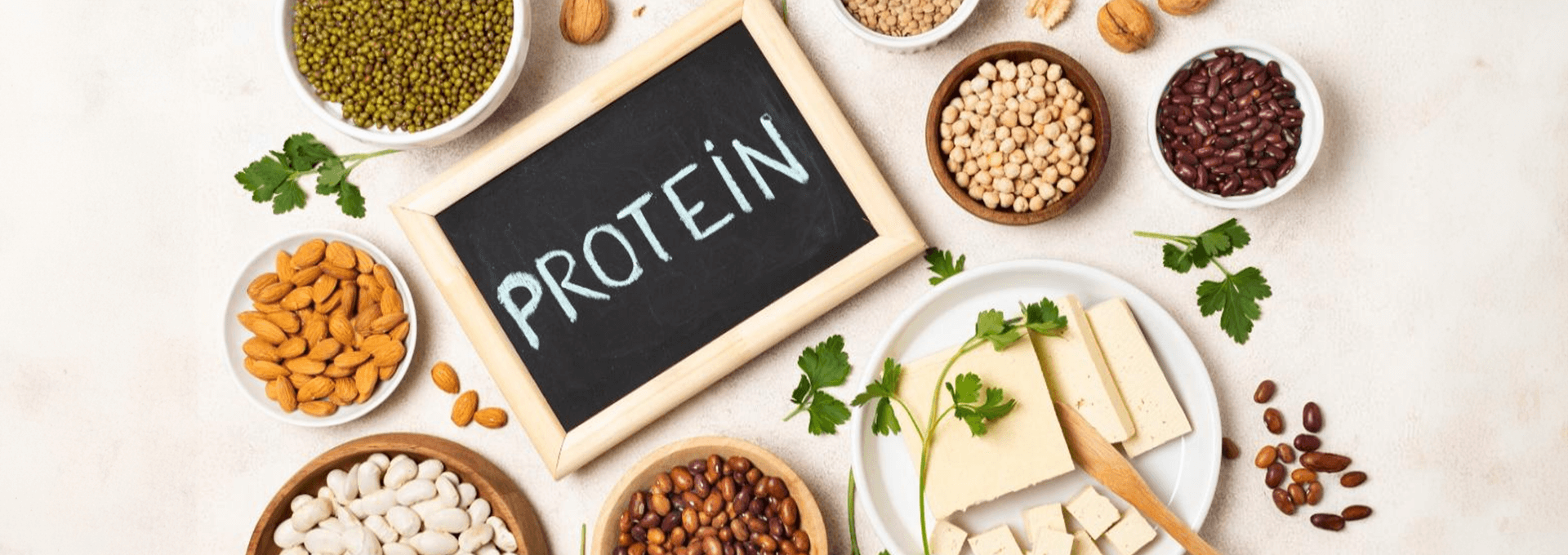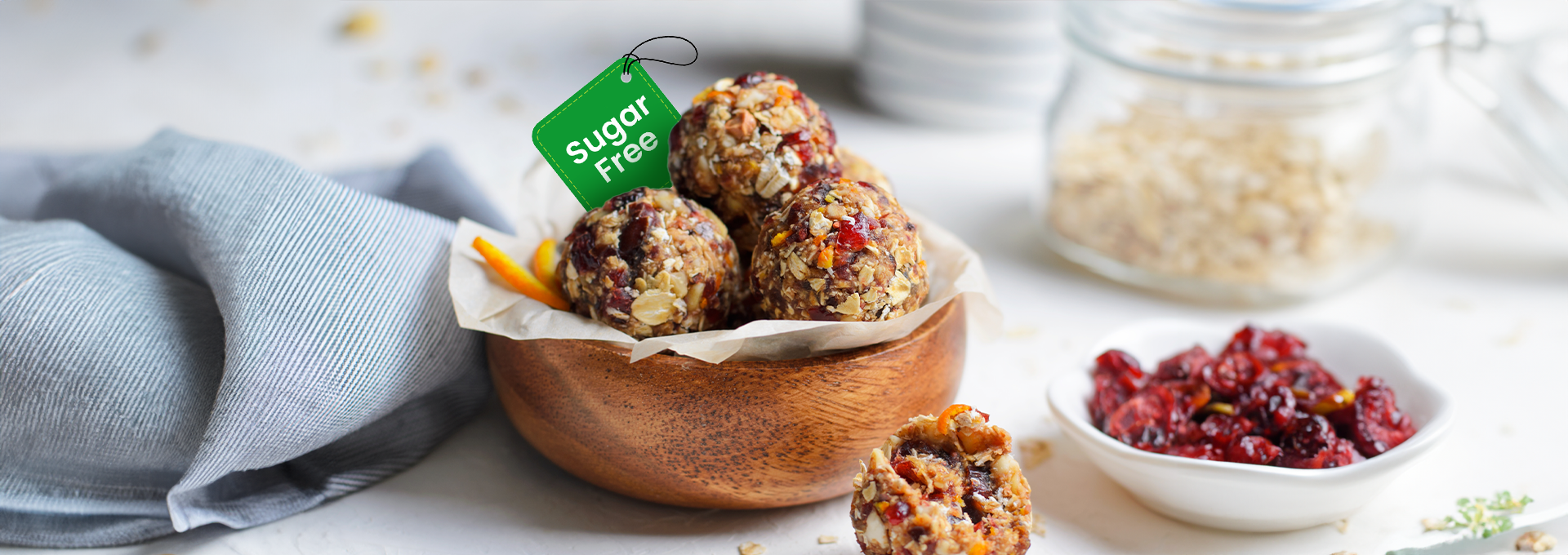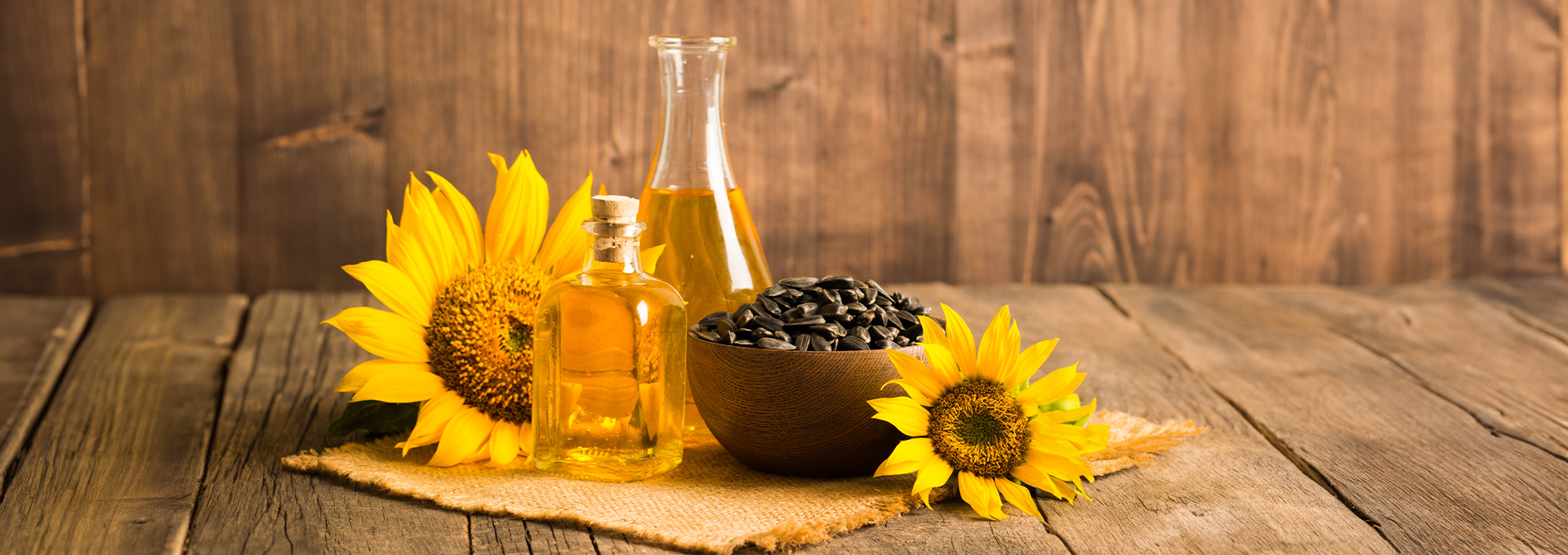
10+ Indian Dessert recipes for this festive season
Introduction
India is rich in traditions and festivals. Throughout the year festivals are celebrated across different communities. No festival is complete without the perfect Indian dessert recipes. Whether it’s gujiya recipes for Holi, modaks for Ganesh Chaturthi or Indian Christmas sweets, inspired from the west, there’s plenty of festive desserts available. The beauty of these sweets is not only in their flavour, but also in how they serve as threads, tying stories, joy, and connection into the fabric of family history. These desserts become a sweet language that expresses love, unity, and the varied diversity of Indian culture.
Chapter 1: Indian Sweet Recipes for Holi
1.Thandai
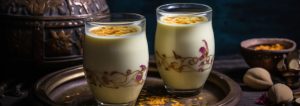
Thandai, which cannot be separated from the vibrant celebration of Holi, is also associated with the seasonal change from winter to summer in many parts of the country. Holi, the festival of colours, celebrates the entrance of spring and corresponds with a period when temperatures begin to climb, hinting at the upcoming heat of the summer months. As the name implies, Thandai is a popular drink for holi that is critical in offering a welcome relief from the blistering heat marking the start of summer.
Regular Thandai, Rose Thandai, and Badam Kesar Thandai all have the same fundamental recipe, resulting in a rich and flavorful traditional Indian beverage. These are the required ingredients:
- ½ cup Almonds
- ½ cup Cashew nuts
- 1 tbsp Poppy seeds
- 2 tbsp Melon seeds
- 10-12 whole Black peppercorns
- 1 tbsp Fennel seeds
- 8-9 Green cardamom pods
- Pinch of saffron
- ½ cup Fortune Sugar or jaggery
- 4 ½ cup Milk
- Water (to adjust consistency, if required)
For each of the unique drinks, tiny changes separate each version. Rose Thandai is made by mixing edible rose water, rose essence, or dried rose petals, which provides a pleasant flowery note.
Badam Kesar Thandai upgrades the flavour with the addition of saffron strands and crushed pistachios, resulting in a delicious blend of flavours and a vivid colour. Regardless of these distinctions, the common base offers a wonderful and refreshing Thandai experience adapted to individual tastes.
2.Gujiya

In Indian homes, gujiyas are extremely important during holidays like Holi. These crescent-shaped pastries, which can be baked or deep-fried, are filled with a delicious concoction of sugar, almonds, and khoya (reduced milk). Here is a gujiya recipe:
Ingredients:
- 2 cups Fortune Maida
- ½ tbsp Ghee
- ½ cup Water (adjust as required)
- ½ cup Khoya
- ½ cup Fortune Suji
- ¼ cup Soaked Almonds
- ¼ cup Raisins
Recipe:
- To make the dough, combine 3 cups of Fortune maida, ghee, and water.
- Knead until thoroughly combined, then set aside.
- To make the filling, fry 300g of khoya and suji until they turn brown, then combine them with sugar, soaked almonds, and green cardamom.
- For added crunch, add raisins and dry-roasted nuts.
- Form the dough into little round balls, stuff with the delectable stuffing, fold over the corners, and deep-fry the Gujiyas in ghee until they turn golden brown.
- Serve this delicious dish with Thandai or Rabri and garnish with crushed pistachios and saffron strands.
3.Puran Poli
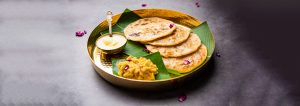
Puran Poli is also famous during Diwali, Gudhi Padwa, Akshaya Tritiya, Ganesh Chaturti and Holi across south and west India. It is thought to bring good fortune due to its rich, aromatic flavour.
Ingredients:
- 1 cup Blanched chana dal
- 1 cup Powdered Jaggery
- ½ tsp Green Cardamom
- ½ tsp Nutmeg Powder
- ¼ tsp Turmeric
- 1.5 cups Fortune Atta or Maida
- 2 tsp Ghee
- Water (as required for the dough)
Procedure:
This beloved festive sweet is produced by mixing split Bengal gramme, or chana dal, with cardamom, jaggery, and a dash of nutmeg to make a sweet and spiced lentil filling known as “puran.” This mixture creates a fragrant and savoury packed flatbread, which is wrapped in a soft, thin dough made with maida or atta, ghee, and water. The dough is stretched, the puran is inserted, it is sealed, and it is fried gently on a griddle until it turns golden brown. Often made for festive holidays, this cherished dish has been passed down through the years and adds a touch of warmth and sweetness to the jubilant celebrations in Indian households.
Chapter 2: Indian Dessert Recipes for Eid
1.Vermicelli or Semiya Kheer
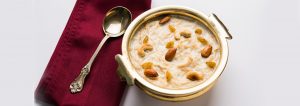
Childhood memories of Eid are frequently associated with the sweet flavour of Kheer. This is among traditional Eid sweets that are made year to year. Kheer or payasam can be made from vermicelli or rice and is a popular sweet dish for Eid. This wonderful dish remains a popular way to celebrate the harvest holiday, serving as a symbol of joy and camaraderie at Baisakhi festivities making it an iconic Indian dessert.
These special ramzan sweets come in a variety of delicious flavours, including Badam Kheer, Pal Payasam, and Coconut Kheer. Badam Kheer captivates with its nutty richness, which is made with soaked and powdered almonds. Pal Payasam is a popular south Indian dessert that combines rice, milk, and jaggery for a cosy blend with a hint of cardamom. Coconut Kheer adds a tropical touch with coconut milk for a refreshing and mildly sweet treat. These different interpretations highlight the gastronomic diversity of Indian cuisine, with each style valued for its distinct flavours and social significance.
Ingredients:
- ¾ cup Vermicelli or rice
- 1 litres whole cream milk
- ½ cup Fortune sugar
- Four crushed cardamom pods
- ¼ cup unseasoned cashew nuts
- ¼ cup sliced almonds
- ¼ cup raisins (soaked)
- 2 teaspoons of pistachios
- 4 teaspoon ghee
Procedure:
- Heat three teaspoons of ghee and softly roast the semaiya till golden.
- In a flat-bottomed pan, bring the milk to a boil, then add the semaiya and stir until thick.
- Combine the cardamom, sugar, cashews, almonds, raisins, and sweetened condensed milk (if using).
- Lower the temperature and stir until the milk thickens (approximately 45 minutes to an hour).
- Combine ghee.
- Garnish with browned pistachios, raisins, almonds, and cashews.
Chapter 3: Indian Sweet for Baisakhi
1.Gajar ka Halwa

Gajar ka Halwa, a delicious Indian dessert made of grated carrots, sugar, ghee, and nuts, is especially significant during the Baisakhi festival. Baisakhi, also known as Vaisakhi, symbolises the Sikh New Year and is widely celebrated, particularly in Punjab. Gajar ka Halwa is an important part of the Baisakhi sweets and its celebrations for numerous reasons.
Ingredients:
- 1kg carrot
- ¼ cup ghee
- 10-12 chopped cashews
- 10-12 chopped almond
- 10-12 chopped raisins
- 3 cups milk
- ¾ cup sugar
- ½ cup khoya/condensed milk
Recipe:
– Step 1: Mix the carrots with milk.
In a pan, combine the grated carrots and the toned milk. Bring to a boil, then reduce the heat and simmer until the milk has reduced.
– Step 2: Add condensed milk.
Mix in your condensed milk and simmer on low heat until thickened.
– Step 3: Add ghee and garnish.
Garnish with chopped cashews and raisins. Serve hot for an enjoyable Gajar ka Halwa experience.
Chapter 4: Indian Christmas Sweets Recipes
1.Marzipan
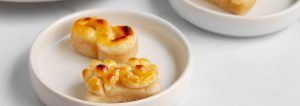
Marzipan is a traditionally western dessert that has been embraced in India over the years. Because of its soft texture and sweet almond flavour, marzipan is a popular ingredient to use when making festive delicacies for Christmas and Easter celebrations. Marzipan is fashioned into fruits, figures, and cake coverings for Christmas, and into peggs, lambs, and chicks for Easter, which represent concepts of rebirth. Marzipan contributes to the sweet customs of both, it is a popular Indian Christmas sweet.
Ingredients:
- 340 grams of unsalted cashew nuts
- 340 grams of icing sugar
- 7-10 drops almond extract
- 2 tablespoons sugar syrup (2 tablespoons sugar in 60 ml hot water)
- Edible food colours, as required
Procedure:
– Process cashews into a fine powder in batches, making sure to strain them to get a smooth finish.
– Combine almond extract, icing sugar, and ground cashews.
– Slowly knead the dough with heated sugar syrup.
– To make a well and add food colour drops, divide the dough into different colours
– Using egg moulds, air-dry the moulded dough for 12 to 14 hours on a pan covered with parchment.
– Garnish the Marzipan Easter eggs as per your preference.
2.Kul Kuls
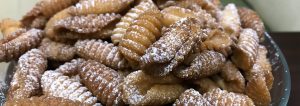
Kul Kuls are a popular Indian Christmas sweet; they are sugar-coated, deep-fried delicacies, shaped like curls or twists, have become an integral part of Indian Christian households’ celebratory traditions.
Ingredients:
- 2 cups Fortune maida
- ½ cup Fortune suji
- Salt to taste
- ¼ cup Ghee or Melted butter
- ⅔ cup Icing sugar
- 150 ml Coconut milk
- Oil for deep-frying
Procedure:
– In a bowl, mix together the flour, suji, and salt.
– Add enough warm ghee to make the mixture resemble bread crumbs, then stir in the powdered sugar.
– After incorporating coconut milk gradually to create a soft dough, let it sit for half an hour. Roll parts about the size of marbles into balls, press them flat, and then curl them with a fork or Kulkul roller.
– On medium-low heat, deep-fry the Kulkuls until golden brown, taking care not to let them brown too much while they cook on residual heat.
These delicious candies are sure to please everyone and are a great complement to any festive party!
Chapter 5: South Indian Sweet Dishes for Pongal and Onam
1. Coconut Laddu
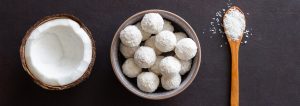
Coconut laddus are one of the most popular south Indian sweet dishes. They are an important part of festivities like Pongal and Onam, and signify the region’s rich agricultural and cultural legacy. These pongal sweets are made with fresh coconut, jaggery, and occasionally cardamom for taste. The coconut’s use draws attention to how plentiful it is in South India and represents fertility and prosperity. Traditionally, during Onam, coconut ladoos are made as a sacrifice to the gods and shared as a token of friendship with loved ones. Similar to this, during Pongal celebrations, these pongal sweets stand in for the harvest bounty and are gladly shared during group meals, encouraging a sense of solidarity and thankfulness for the community’s bountiful crop.
Ingredients:
- 1 ½ cup of recently grated coconut
- One teaspoon of clarified butter, or Ghee
- ½ teaspoon of cardamom powder, or four to five crushed green cardamoms; ½ can (200 grammes) sweetened condensed milk
- 1/3 cup of either freshly grated coconut or desiccated coconut (for rolling)
- Chopped nuts or dried fruit, depending on your choice
Procedure:
– Heat ghee in a pan over low heat.
– For 3–4 minutes, roast 1.5 cups of densely packed coconut (avoid browning).
– If using, combine desiccated coconut with condensed milk
– To the roasted coconut, add the condensed milk and cardamom, and simmer over low heat until thickened.
– Once the mixture leaves the pan’s sides and coconut fat starts to emerge, turn off the heat.
– Pour the mixture into a different bowl and let it cool.
– Roll the cooled mixture into ladoos, serve with all your south Indian sweet dishes and enjoy!
Chapter 6: Indian Desserts for Diwali and Ganesh Chaturti
1. Modak

Modaks are a popular festive dessert that are very important to Ganesh Chaturthi celebrations. It is closely associated with the event and represents Lord Ganesha’s fondness for the delicacy. During this celebration, modak preparation and sharing symbolise devotion, good beginnings, and the festive spirit. During the colourful Ganesh Chaturthi celebrations, the modak is a revered offering and a beloved custom for greeting Lord Ganesha in homes and hearts because of its unusual shape, which is thought to resemble his potbelly. Modak recipes generally use rice flour, jaggery and shredded coconut.
Ingredients:
- 1 cup (150 grammes) of rice flour
- One and a half cups water
- A tsp of Fortune oil or Ghee
- One-fourth teaspoon of salt
- One cup of freshly shredded coconut
- One cup of finely chopped jaggery
- One tsp cardamom powder
- 1/2 tsp ground nutmeg powder or grated nutmeg (optional)
- One tablespoon of rice flour, if desired
Procedure:
– To the pan, add the grated nutmeg, jaggery, cardamom powder, and coconut.
– Stirring often, cook the coconut-jaggery mixture over low heat until the jaggery melts.
– Simmer for another 7 to 9 minutes, or until the jaggery starts to dry out. Steer clear of overcooking to avoid hardening.
– The coconut-jaggery filling will thicken as it cools, so set it aside to cool.
– You can optionally add some rice flour to the filling to help it absorb moisture.
– To make the rice flour dough, bring a pot of water to a boil with salt and oil or ghee. Gradually add rice flour, stir to combine, and cover to rest for five to six minutes.
– Work the heated dough into smooth balls by kneading it and adding extra water if necessary. Cover the balls to avoid cracking.
– Using your fingers, flatten a ball into the shape of a shallow bowl or a round disc.
– Spread some oil or ghee on your palms and flatten them. Put the filling that is sweet in the middle.
– Press and flute the edges. Join all of the edges by bringing them together.
– If there is any excess dough, take it off the top. Using your fingertips, form and taper the top of the modak.
2.Boondi

Sweet boondi is a popular Indian dessert that is very important in Indian culture during holidays like Diwali and Navratri. Boondi ladoos represent wealth and the festive spirit of various Hindu holidays. Boondi ladoos are frequently made as gifts for the gods, shared with loved ones, and given out at celebrations. They are a beloved and essential component of colourful celebrations, contributing a touch of sweetness to the auspicious festivals of Diwali, Navratri, and other cheerful festivities.
Ingredients:
- 1 cup Fortune besan
- a quarter cup of water
- 1/4 teaspoon of baking soda
- 1/4 tsp food colouring saffron
- Fortune Oil for frying
- 1/4 cup sugar
- Two cardamom pods
- 1½ cups water
- 1 tsp food colouring saffron
Procedure:
– In a pan, combine sugar, cardamom pods, and water to make sugar syrup. When slightly sticky, add food colouring saffron and boil. Put aside.
– To make boondi, combine saffron food colouring with one cup besan in a bowl. To create a smooth batter, gradually add water and beat for 5 minutes.
– Add ¼ tsp of baking soda to the mixture.
– Pour the batter over a skimmer into heated oil and swirl until brown and crisp to produce boondi. Eliminate extra oil.
– After submerging the boondi in warm sugar syrup for an hour or overnight, remove any leftover syrup. It’s time to savour meethi boondi, also known as sweet boondi.
3.Mysore Paak
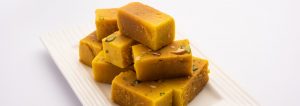
Mysore Pak is a delicious south Indian sweet dish and is popular around festivals like Diwali and Ugadi. The epitome of festive celebrations, this ghee-laden, besan based dessert is renowned for its rich taste and melt-in-your-mouth texture. Mysore Pak, when made using traditional methods and meticulous preparation, is frequently offered to gods during religious rites and is a staple of celebratory feasts.
Ingredients:
- Two cups of sugar
- One sprinkle of baking soda
- One cup of besan
- Two cups of ghee
- Half a cup of water
Procedure:
– First, Roast the besan: In a pan over medium heat, preheat one cup of ghee. When the raw scent is gone, add the besan and roast.
– Get the sugar syrup ready: Boil sugar and water in a separate pan until the mixture resembles a single thread. When the sugar syrup thickens, mix in the roasted besan. Stir the besan mixture into the heated ghee and keep stirring.
– Add cooking soda when the ghee separates and rises from the sides. Spread and cool for shaping
– To shape, spread the batter made of besan and let it cool.
4. Besan Laddu
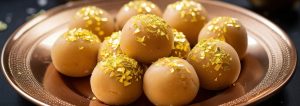
During holidays like Ganesh Chaturthi and Diwali, besan laddu has great cultural significance. During Diwali, the rich, fragrant aroma of besan laddus pervades homes, bringing sweetness to the festive mood and symbolising the victory of light over darkness. In addition to being a delectable treat, laddus are a cultural symbol shared with loved ones to convey happiness and well wishes.
Ingredients:
- 2 cup Fortune Besan
- ½ cup Ghee
- 2-4 tbsp Almonds
- ⅔ tsp Cardamom
- 1 cup Powdered Sugar
Procedure:
– Roasting besan (gramme flour) in ghee until it turns golden brown and releases a nutty aroma.
– The besan is combined with chopped almonds, cardamom, and powdered sugar when it has cooled.
– Combine the mixture into bite-sized laddus.
Chapter 7: Indian Dessert Recipe for Durga Pooja
1. Sandesh

Sandesh is more than just a festive Indian dessert; it has deep cultural importance for Bengalis. It is an essential part of all events, including being a key dish on the Durga puja sweets menu. It is savoured on Diwali, marriages, and birthdays. Presenting Sandesh to friends is a sign of warmth and friendliness.
Ingredients:
- Two tbsp Lemon Juice.
- One ltr Full Cream Milk or Cow milk.
- 1/4 cup Powdered Sugar.
- 1/4 teaspoon Green Cardamom Powder.
Procedure:
Step 1: Bring 1 litre of full cream milk to a boil over medium heat.
Step 2: Once the mixture reaches a rolling boil, lower the heat to low. Gradually add 2 tablespoons of lemon juice while stirring constantly. Within 1-2 minutes, the milk solids and whey (liquid component) will begin to separate.
Step 3: Once the separation is complete, place the mixture in a colander or a big sieve lined with cheesecloth. Drain the whey. Rinse the paneer (chhena) under running water to remove any remaining lemon flavour.
Step 4: Wrap the prepared chhena in a muslin towel, squeeze gently to drain excess water, and hang for 30 minutes. To avoid overdrying, do not exceed this time
Step 5: Place the hardened chhena—which should be moist—on a sizable dish. Crumbled sandesh can be caused by excessive dryness.
Step 6: Work the dough until it resembles chhena, about 4–5 minutes.
Step 7: Add 1/4 teaspoon of green cardamom powder and 1/4 cup of powdered sugar.
Step 8: To ensure complete mixing, knead for a another three to four minutes.
Step 9: Pour the prepared mixture into a nonstick skillet with a heavy bottom.
Step 10: Cook over low heat, stirring constantly, for about 5 to 6 minutes, or until the mixture becomes slightly dry but is still moist. To keep the chhena from crumbling, don’t overcook it.
Step 11: Switch off the flame and give it a few minutes to cool. Knead thoroughly while still warm, until it is smooth.
Step 12: Form the mixture into round balls by dividing it into 12–14 tiny sections. To flatten each ball into the shape of a thick patties, gently press it between your palms. As a garnish, press some chopped pistachio pieces with your index finger in the centre.
Chapter 8: Indian Dessert Recipe for Bihu
1. Pitha
 ”
”
The custom of preparing and consuming pitha is deeply ingrained in Assamese culture, particularly on holidays like Bihu. Pitha is a traditional rice cake from Assam that represents celebration, community, and the harvest. Pithas, which are made using ingredients that are sourced locally, are made in a variety of forms and flavours that showcase Assam’s rich culinary legacy.
Ingredients:
- Two cups of sweet rice or regular Fortune rice
- Four tablespoons of regular rice powder
- One and a half cups of jaggery powder (adjust to taste)
- Frying oil (Assamese cooking traditionally uses Fortune Kachi Ghani mustard oil)
Procedure:
– To make rice soft, wash and soak it for two to three hours. Spread out on muslin fabric and let it air dry for two to three hours.
– After finely powdering the rice, strain it to get rid of any remaining grain.
– To produce a soft dough, combine rice powder, jaggery, and ground rice in a bowl. Water should be added gradually.
– Roll dough into little balls and press on a flat surface.
– In a pan, heat the oil over medium heat. Fry pithas until they are golden brown on the outside and tender on the inside.
– Serve hot and enjoy on its own or with milk, tea, or your favourite beverage.
Conclusion
There are a variety of festive Indian desserts, offering diverse flavours. From a variety of laddus to Eid and Diwali sweet dishes, there are a number of dessert options available. Explore Fortune’s collection of pantry staples and make delicious Indian desserts this festive season!
